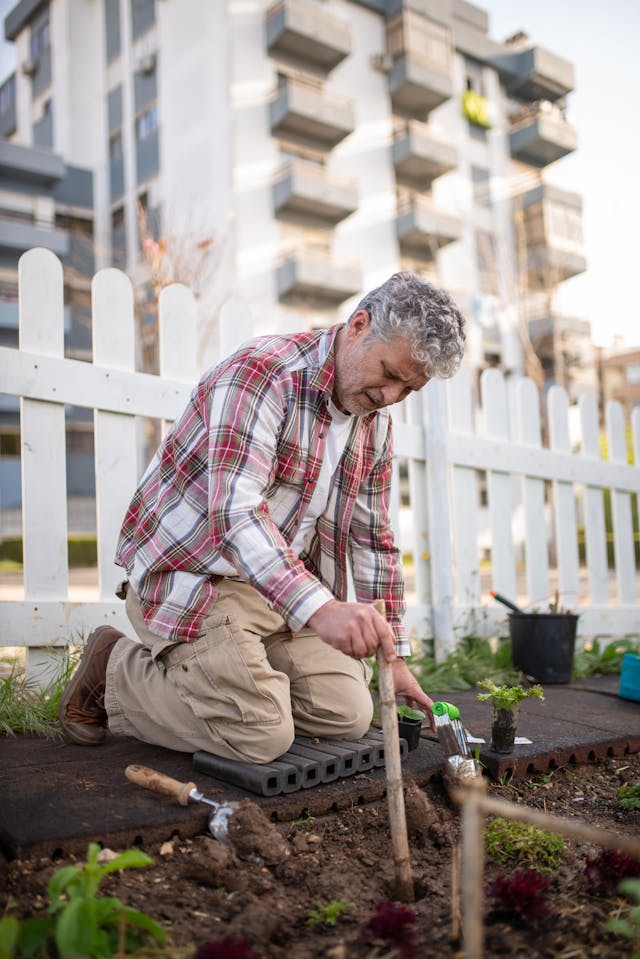Creating a fruitful garden requires more than planting seeds in the earth and hoping they grow. Companion planting involves planting different plants together to help them develop healthy, deter insects, and utilize the available space. It allows gardeners to achieve a balanced ecosystem that will translate into healthier plants with minimal chemical fertilizers or pesticides. We will learn to use seeds strategically to enhance plant productivity and health. Knowing which plants get along with each other and why can turn a simple garden into a sustainable and thriving ecosystem. Applying these methods increases the productivity of fruits, vegetables, and herbs and the health of the soil and biodiversity.

Strategic ways of using seeds
- Understanding the Benefits of Companion Planting
Companion planting is done by using the natural association between different plants. Certain plants release beneficial chemicals into the soil, promoting the growth of neighboring plants, while others shade, provide anchorage, or protect from insects. For example, legumes such as peas and beans release nitrogen in the soil, which is beneficial for plants requiring high levels of this element, such as tomatoes or corn. Marigolds, typically seeded along with vegetables, keep disgusting insects away due to their strong scent. Placing organic seeds in a garden in a particular way and having coexisting plants means that gardeners can have a space where the best plant growth, soil health, and natural pest control are facilitated.
- Pairing Plants for Pest Control
Companion planting is best employed for controlling pests. Certain plants give off aromas or chemicals that can chase away insects and protect neighboring crops. Basil, for example, is most commonly placed around tomatoes to chase away flies and mosquitoes. Onions and garlic can also scare away aphids; hence, they can be used near lettuce or cabbage. Moreover, flowers such as nasturtium and other flowers serve to divert the pests from plants that are easily attacked, forming a natural means of pest management. By situating seeds for pest-repellent plants alongside vegetables and herbs in a patterned way, gardeners effectively reduce the level of pesticide needed while maintaining ecological health. Doing so ensures the welcome of beneficial insects such as pollinators and natural prey of pests within the garden.
- Improving Soil Quality with Companion Planting
Healthy soil is the foundation of any successful garden, and companion planting is essential to soil health. Some plants like clover and beans fix nitrogen in the soil, which benefits crops that require high nitrogen levels. Vegetables with deep roots, like carrots, enhance airflow in the soil, allowing water and nutrients to penetrate more freely. Leafy greens and ground cover plants also prevent soil erosion by reducing water runoff. By considering where to plant seeds, gardeners can develop soil structure, reduce the loss of nutrients, and stimulate a self-reliant cultivation system. The process is particularly effective in seasonally planted gardens because companion plant rotation maintains soil health in the long run.
- Maximizing Space and Increasing Yields
Strategic planting techniques allow gardeners to make the most available space and harvest more total crops. Companion planting is usually intercropping, where different plants are grown in clusters to use soil space best. One extremely popular technique is the Three Sisters method used by Indigenous farmers, where corn, beans, and squash are grown together. The corn supports the beans, and the beans fix nitrogen in the soil, benefiting all three. The squash does ground cover, keeps the weeds out, and retains the moisture in the soil. Gardeners can optimize their space utilization by emulating these methods to grow various crops. Seeding purposefully with these concepts in mind yields an overflowing, productive garden.
- Encouraging Pollination and Biodiversity
A balanced garden depends on pollinators such as bees and butterflies to ensure fruit and vegetable harvests. Companion planting will attract these valuable insects by providing nectar- and pollen-forming flowers. Lavender, sunflowers, and zinnias are suitable flowers for attracting pollinators. Growing varied crops also promotes biodiversity, ensuring a balanced ecosystem. Different plants will draw different insects, and they, in their turn, manage the pest populations. Employing companion planting principles to develop diversity makes the garden healthy and resilient. With a selection of pollinators and beneficial insect-attracting seeds, gardeners provide an environment that supports plant and insect life.
- Providing Shade and Microclimate Control
Companion planting can help regulate temperatures and provide shade for sensitive plants. Sunflowers or corn can be used as natural shades for partial sunlight needs, such as spinach or lettuce. This technique is very effective when some plants cannot tolerate the heat in warm weather. The formation of microclimates through strategic planting also helps keep the soil moist, eliminating the need for frequent watering. Using plants as shading agents enables gardeners to offer a greener growing condition that optimizes the condition for each crop.
- Suppressing Weeds and Reducing Maintenance
Weeds compete with plants for nutrients, sunlight, and water, so controlling weeds is an essential part of maintaining a healthy garden. Companion planting can also prevent weeds by using ground cover plants such as clover, squash, or creeping thyme to create a natural barrier. These plants spread across the soil’s surface, not allowing weeds to take root and reducing the need for manual weeding. By strategically planting seeds of plants that suppress weeds, gardeners can minimize the amount of labor required to keep their garden beds weed-free while ensuring that their plants receive the required resources.
- Enhancing the Aroma and Flavor of Crops
Some of the plant combinations have the potential to enhance the flavor and scent of vegetables and herbs. Basil grows with tomatoes not only for pest control but also to boost the taste of the tomatoes. Rosemary and sage also boost the flavor of carrots and beans that grow surrounding them. Plants release natural chemicals that interact with the adjacent plants, making their quality generally higher. By incorporating flavor-enhancing buddy plants, farmers can cultivate nutritious, flavorful, and aromatic crops.
Companion planting is an effective and valuable way of optimizing the health and yield of a garden. We have observed how seed placement, with attention, can enhance the health of the soil, deter pests, increase yield, and stimulate biodiversity. Knowing what plants benefit one another, gardeners can plant a healthy, sustainable ecosystem requiring fewer chemical inputs. Thoughtful planning of combination planting results in more nutritious, more vigorous crops that benefit from nature’s interactions. Implementing these techniques creates a more productive garden that supports plant growth and the accompanying ecosystem. Careful planning makes companion planting a worthwhile means to a healthy and harmonious garden environment.
















Add Your Comment